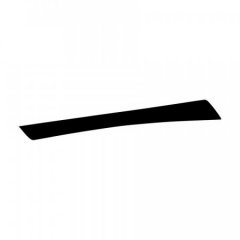Newb Questions That Never Get Good Answers: Part 1
What's the difference between Chinese characters and Japanese characters?
This is most commonly asked when referring to Han characters used in Chinese and Japanese languages. However, just to get the differences in scripts out of the way: Chinese morphemes are almost all Han characters (with Latin characters and Arabic numerals sometimes). Japanese uses hiragana and katakana in addition.
Now, about the Han characters:
At the most basic level, they are the same except for usage and newly created characters that were not shared. Usage differences may be because either language (the Chinese language not necessarily being Mandarin) uses it differently from older meanings, the meanings one would expect both to have. An example of a usage difference is 走, where it means "go" and "walk" in Mandarin and "run" in Japanese. An example of a newly created unshared character is 匂, which is a Japanese-created character that means "(n) smell."
In addition to those differences, there are different standards, which describe and create different trends in the forms of Han characters. There are also nonstandard forms that are commonly used in Chinese and Japanese language environments. The general assumption is that there are only two or three standards: one for Japanese and one or two for Chinese. There are actually many standards for both Japanese and Chinese. However, there are only 4 or 5 current standards: 3 for Chinese and 1 for Japanese. They are
Korean language environments also have standard (not standardized) Han characters, which mostly resemble the forms in the Kangxi Dictionary.
Because Japanese and Chinese language environments tend to follow different standards, which prescribe different character forms, the forms of characters are different. These differences may be due to creating new characters or character forms, or adopting different variants as standard. An example of a new character form in the 现代汉语常用字表 is 汉, which was created as a simplification of 漢 (whose form may appear as in any of the other standards depending on the typefaces installed on your system and your browser configuration). Simplification is the general reduction in the number of strokes in a Han character. An example of adoption of different variants is in the grapheme 冰/氷, where all modern Chinese standards use 冰 as standard and the Japanese standard uses 氷. (To clarify: 氷 is not a Japanese-made variant.) Other differences between standards may not be so obvious. The image on this page shows some more differences between the variants adopted in different standards.
One of the easiest ways to examine differences between standards is to type the same thing many times in a word processor and change the typeface to different standard typefaces. Some standard typefaces are:
- Zhongyi KaiTi, which follows 现代汉语常用字表. Included in Windows Vista and 7.
- 教育部標準楷書, which follows 國字標準字體. Free from here.
- DFPHKStdKai-B5, which follows 常用字字形表. You could probably find it easily if you search for "華康香港標準楷書."
- EPSON 教科書体M, which follows 常用漢字. Free from here.
Note, however, that this will only show differences within the same code point. Some differences between standards are encoded with different code points.
Quiz:
1. In which standard(s) could this character be?
2. In which standard(s) could this character be?
Extra credit:
1. In which standard(s) could this character be?
2. In which standard(s) could this character be?



0 Comments
Recommended Comments
There are no comments to display.